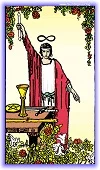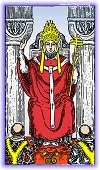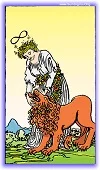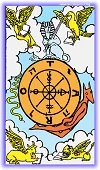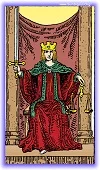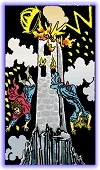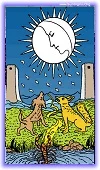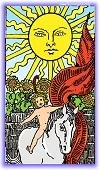Introduction
The Major Arcana are the permanent trump cards used in games played with this deck. They are separate from the four standard suits, wands, cups, pentacles, and swords, which are known as the ‘Minor Arcana’. The overall meaning of the 22 cards of the Tarot Suit of Major Arcana in tarot readings was originally tied to the Italian Courts of the 15th century when the deck was first created.
The metaphysical and divinatory meanings of the cards would not be introduced until the 18th century by Antoine Court de Gébelin, who was a Swiss clergyman, and prominent member of the Freemasons.
From this point forward, one can interpret the Major Arcana as the transition through life’s journey, representing a cycle. That cycle begins with the fresh and new-minded Fool, beginning his walk down life’s path. This can represent actual youth or the beginning of a new journey through life. All of us can be the Fool multiple times, and sometimes we never quite complete any given journey we start in that capacity.
The Tarot Suit of Major Arcana
From that point forward, one can see a journey of life’s struggles and experiences, the joy and pain of being alive. The Magician is the very culmination of the concept of ‘potential’, full of nothing done but the ability to do anything. The Emperor has come into his own and has his realm of control.
This can be as simple as renting our own home, or as complex as being head of your department at work. This journey can continue to be followed throughout the Tarot, and at any point in our lives we can likely relate to one or more of this group of trump cards.
From the point of de Gébelin’s work forward, the Major Arcana has been the point of much scrutiny and deep discussion. The Major Arcana have been explored by psychologists, utilized in therapy, and included in every form of mysticism, esotericism, and occultism that the world has produced.
Carl Jung on Tarot Cards
Carl Jung, father of Jungian philosophy, had the following to say about the Tarot cards in general, and the Major Arcana in specific: “If one wants to form a picture of the symbolic process, the series of pictures found in alchemy are good examples.
It also seems as if the set of pictures in the Tarot cards distantly descend from the archetypes of transformation.” And so draws an association between the ancient occult science of Alchemy with its central theme of transformation and the path laid out for us in the Tarot.
One can learn much from watching the path of the Fool, walking through life from his naivety into enlightenment. It is a path of transformation, and more importantly one of self-realization. It is one which we all walk whether we are aware of it or not. The Major Arcana of the Rider Waite Deck, along with its attendant Minor, can serve to give us some guidance along this long and well-worn road.
Tarot Cards of the Major Arcana
0 – The Fool Meaning
I – The Magician Meaning
II – The High Priestess Meaning
III – The Empress’s Meaning
IV – The Emperor’s Meaning
V – The Hierophant Meaning
VI – The Lover’s Meaning
VII – The Chariot Meaning
VIII – Strength Meaning
IX – The Hermit Meaning
X – Wheel of Fortune Meaning
XI – Justice Meaning
XII – The Hanged Man Meaning
XIII – Death Meaning
XIV – Temperance Meaning
XV – The Devil Meaning
XVI – The Tower Meaning
XVII – The Star Meaning
XVIII – The Moon Meaning
XIX – The Sun Meaning
XX – Judgement Meaning
XXI – The World Meaning
 Sun Signs Everything Under The Sun!
Sun Signs Everything Under The Sun!


